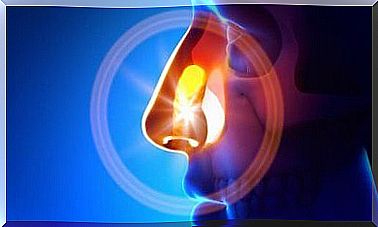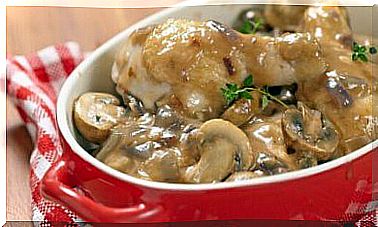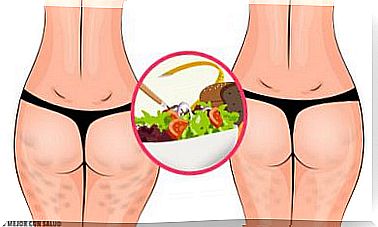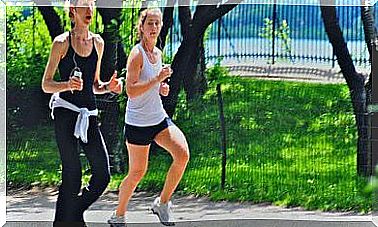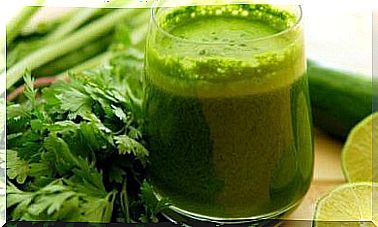How To Avoid Breast Cysts?
It is important to monitor the progress of breast cysts, although there is no direct link between them and the development of breast cancer
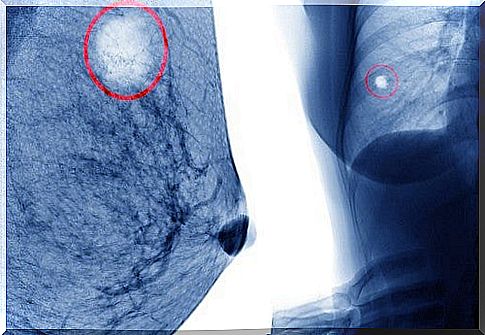
Many women today are afraid of developing breast cancer. However, having cysts in the breasts and developing cancer is not necessarily linked.
We will therefore present to you below the different types of existing breast cysts and offer you solutions if you find these small balls during a palpation at home or a medical check-up.
There are many legends circulating on the net and elsewhere claiming that there is a direct link between breast cysts and the development of breast cancer. But this is not the case.
It is nevertheless true that the presence of breast cysts must be controlled, minimized or better, removed. It is also important to adopt responsible behavior and perform the right actions.
Indeed, although there is no direct and usual relationship between these cysts and breast cancer, some studies claim that there is a greater risk of developing malignant cysts in women who have never had. children, women with irregular menstrual cycles or those with a family history of breast cancer.
What is a breast cyst?
A breast cyst is a pocket of fluid inside the breast that is normally small in size (like a chickpea). The appearance of this kind of cyst is completely random. It does not follow any pattern. It can even develop in very young women, or even little girls, around 10 or 12 years old.
Liquid cysts are the most common, but there are also hard cysts that do not contain fluid.
 There is another type of breast cyst: adenofibromas. These are asymptomatic and painless tumors. They take the form of a hard, mobile, smooth or rough ball in some cases.
There is another type of breast cyst: adenofibromas. These are asymptomatic and painless tumors. They take the form of a hard, mobile, smooth or rough ball in some cases.
These cysts can be detected during palpation. They can usually move between the fingers. These benign breast cysts are caused by an excessive overgrowth of breast tissue, and although they may be mistaken for the earlier cysts mentioned above, they are quite different.
Fibroids are indeed more common before menaupause and, although they can appear at any age, they develop especially during puberty and in young women. Hence their link with the usual hormonal changes during this period.
Treatment against cysts generally relies on the vigilance of the patient who must monitor their progress. Surgery is not necessarily necessary. The simplest will be eliminated by making a puncture which will aspirate their contents. The more complex ones, on the other hand, will be removed by biopsy and surgery.
Possible causes of breast cysts
Breast cysts can have several origins:
- Due to the anatomy of the breast, it is common for the lobules to become blocked. This blockage then causes a buildup of fluid inside, causing the cysts to appear.
- They can also have a hereditary origin, especially if they are solitary. This hypothesis nevertheless remains uncommon.
- The most common cysts are caused by benign changes in the tissue of the mammary glands (mastopathies). They mainly appear from menopause. They can therefore come from hormonal imbalances characteristic of this period, but also from fibrocystic changes (spontaneous common and benign changes in breast tissue). This is a common occurrence in healthy breasts and is considered a normal variant.
- Note that these cysts are affected by hormonal changes in women. You must therefore perform the palpations before or after the rules because the cysts often change in size depending on the period of the cycle. It is therefore advisable to always palpate the breasts on the same date of the month.
- On the other hand, it is necessary to provide for their appearance in case of high consumption of xanthines (coffee, tea, chocolate, seafood, sodas and the like).
- Obesity also increases the risk of developing benign cysts as well as malignant ones.
- A woman who is not breastfeeding is also at greater risk of developing cysts. The same goes for women who have not had children. The onset of menopause is also a critical time.
- A diet low in fruits and vegetables also increases the risk of suffering from cysts.
- It is important to stress that drugs, alcohol and tobacco increase the risk of developing breast cancer. However, they do not lead to the formation of cysts.
Rumors say that certain medical practices would be dangerous for health. This is totally wrong.
Mammograms do not damage the breasts. Accidental hits do not cause breast cancer. The puncture (the injection of a needle to aspirate the contents of the cysts) does not spread the cyst in the breast.
The biopsy (collecting samples) also does not help the cancer to grow. Likewise, neither implants nor the use of contraception promote the formation of cysts. These are just myths that are best to be forgotten.
We have seen that the formation of breast cysts results from very different and known causes.
Check out this article: Treatments Used To Fight Breast Cysts
Good habits and natural remedies to prevent the appearance or development of breast cysts
Here you will find some tips to prevent the appearance of cysts, their growth or multiplication. The first step is to adopt good preventive habits. It is therefore important to observe your breasts on a daily basis.
This will help you learn to listen to your body and recognize the symptoms that will allow you to make a diagnosis as early as possible. Palpation of the breasts, done every month on the same date, is a good way to detect an unusual small lump.
It is therefore important to be able to make a diagnosis as soon as possible, know your body and follow a balanced diet. This will prevent and prevent the appearance of cysts, breast pain and breast cancer.
On the other hand, do not hesitate to consult your doctor if you detect any kind of cyst during your usual palpations. He will then perform a simple examination to find out what type of cyst it is.
It will be a simple cyst in 98% of cases if the cyst is liquid or semi-liquid, without a trace of blood. This means that it will not turn into cancer. It won’t be dangerous. It is therefore possible to aspirate its content and subsequently avoid the factors that aggravate or trigger its appearance.
Reduce your intake of refined fats and carbohydrates
Breast tissue is very sensitive to diets high in fats (especially trans and saturated fats) and carbohydrates, which raise estrogen levels.
Excess estrogen stimulates breast tissue causing pain, the appearance of cysts in women and a greater risk of developing breast cancer and other gynecological cancers. It is therefore important to reduce our fat mass index in case of overweight.
Foods that can help you
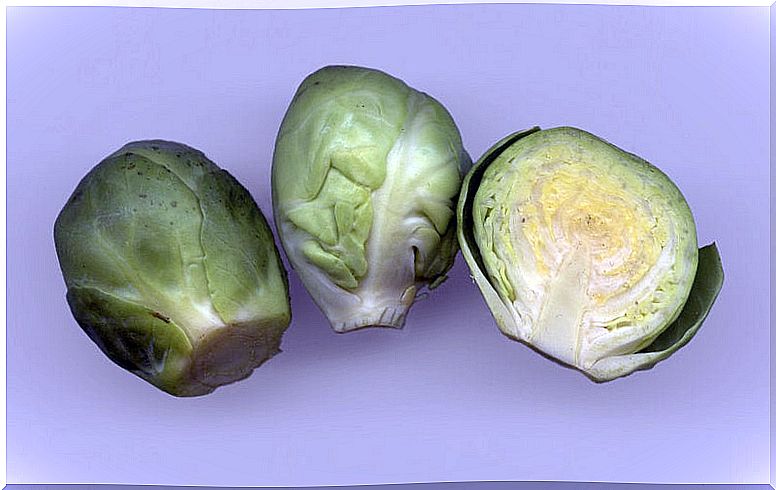
Consuming fiber from plant sources (such as whole grains and fruit) is crucial to flushing out excess estrogen. Cruciferous vegetables like broccoli, cabbage, Brussels sprouts, and turnips contain indole-3-carbinol. This compound reduces the ability of estrogen to bind to breast tissue.
It is recommended to consume two servings of this type of vegetables per week (minimum). The ideal is to consume it every day. You can also take extracts from broccoli or cruciferous vegetables.
Soybean derivatives like tofu, miso or tempeh are highly recommended for their plant phytoestrogens, although there are some conflicting studies on this. The choice is yours. However, we do not recommend transgenic soybeans: read the label carefully!
A diet rich in whole grains and low in animal fats is a fundamental ally.
Eliminate dairy products
It is recommended that you remove dairy products from your daily diet. Especially the milk. It is sometimes difficult to resist these kinds of products, but it is better to get rid of them. Or at least reduce our consumption or buy organic products to avoid breeding cows treated with hormones and drugs.
Take the test for a month, you will see that you have everything to gain!
Cut out caffeine and chocolate
Caffeine (tea, coffee, sodas), chocolate and non-alcoholic beer should be avoided. These drinks contain methylxanthines which can lead to too much stimulation of breast tissue in some women.
Chocolate is obviously the king of delicacies. However, avoid consuming it for at least one full menstrual cycle if you experience breast pain and cysts. You will be able to see the results.
Food supplements
Evening primrose, primrose or borage oils are rich in omega 6 (gamma-linolenic acid, GLA). They relieve breast tenderness in many women by reducing inflammation. The same goes for the omega 3 that we find in blue fish oil (beware of heavy metals), linseed, sesame and walnut oil.
Some studies claim that consuming omega 3s helps protect against breast cancer. Moringa oil is also rich in omega 9, 6 and 3. It is one of the best sources of natural antioxidants.
Take vitamin and mineral supplements (vitamin E and A, coenzyme Q10 and selenium). These antioxidants are indeed very beneficial.
Iodine decreases the ability of estrogen to attach to receptors in the breasts, which decreases pain. You can include it naturally in your diet thanks to wakame and kombu seaweed. However, avoid overeating in case of thyroid problems such as hyperthyroidism.
You can also consume green tea ( Camellia sinensis ) extract at a rate of 200 mg per day. Some studies claim that green tea helps reduce the risk of suffering from breast cancer and relapses.
Don’t forget about the salvestrols found in fruits like tangerine, grape and blackberry. You can thus make infusions with the desired quantities. Propolis, for its part, inhibits the activity of the aromatase enzyme, an action that reduces the presence of estrogen.
The Mesima fungus ( Phellinus linteus ) stimulates the production of defensive cells. It stops the growth and formation of malignant cells and reduces cell adhesion and migration. This fungus can be eaten during and after the cycle of chemotherapy or radiation therapy when treating cancer.
You can also combine it with other mushrooms like the sun mushroom ( Agaricus blasei ), turkey tail ( Coriolus versicolor ) and reishi ( Ganoderma lucidum ). It is recommended to consume them on an empty stomach with a citric juice.
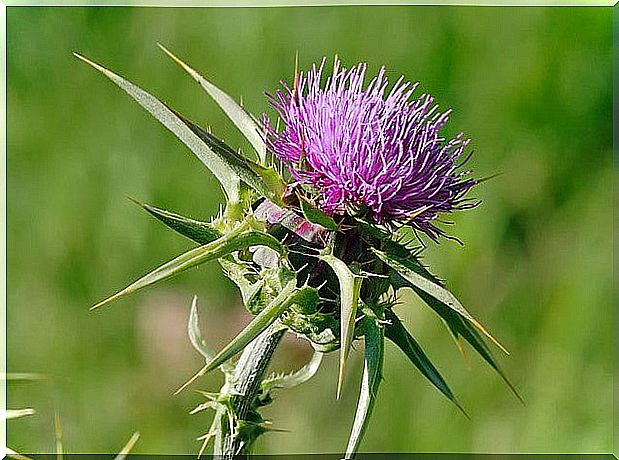
Milk thistle ( Silybum marianum ) is also very helpful for the liver, which must be healthy and functioning properly. Indeed, an adapted liver function guarantees the good metabolism of estrogens, which can then be controlled.
Milk thistle is also an excellent antioxidant. It has antineoplastic effects against breast cancer. In other words, it prevents the development of tumor cells.
Discover this article: The ideal diet to avoid breast cysts
Avoid underwired bras
This type of bra can block blood and lymph flow to the breasts, chest wall, and surrounding tissue. Even if it is complicated to do without, at least try to wear it for fewer hours a day.
Clay and castor oil
You can use castor oil compresses and apply them to the breasts to decrease pain and inflammation. For one hour, three times a week and for two or three months. You can then apply them only once a week.
Poultices and clay compresses are a good way to reduce pain and inflammation. They also make it possible to remove the cysts (this method is however not recommended if the cysts are carcinogenic).
You can leave them on until they dry and rinse well afterwards. It is sometimes recommended to sleep with the compress. We can cover it with lettuce leaves and then put on a cotton bra to prevent it from drying too quickly.
Thus, avoiding cysts and slowing their development is within our reach. It only takes a few economic remedies and willpower. Listen to your body, watch it. In short, take care of yourself!



